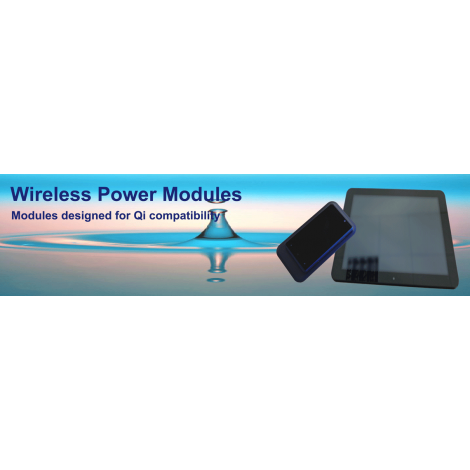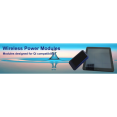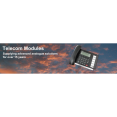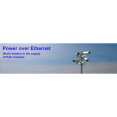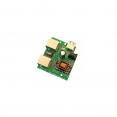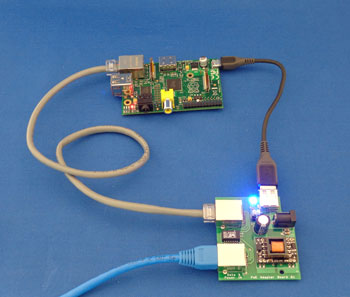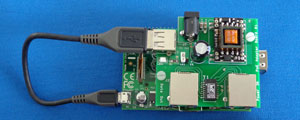Single Wire HDBaseT TV
World's first fully integrated POH HDBaseT TV - from Aquavision, courtesy of Silvertel POH modules
Aquavision have released their Connec-TV Active HDBaseT range for the ultimate in luxury, high quality, High Definition, waterproof Bathroom TV. Utilising the Valens HDBaseT chip sets for transmitting uncompressed 10Gbps high definition video, along with audio, 100BaseT Ethernet, Infra-Red (IR) controls, signalling and 100W of Power Over HDBaseT Power, courtesy of Silvertel's high power PD and PSE modules.
The Aquavision range includes two screen sizes 22" and 27", both of which have the power over HDBaseT capability built in. Which means they are the first products in the world to fully realise the potential of HDBaseT and its ability to transfer enough power over a single CAT6 cable to power a TV. They can therefore be installed without the need for a mains plug point nearby, with all the ease of installation benefits it brings, including no expensive mains wiring, and perfect for use in bathrooms, with POH all delivered at low SELV voltages of less than 60V. And all made possible through the use of Silvertel's low profile and easy to integrate high power POE modules.
For more information on the Aquavision range, see their web site. See the Aquavision-Silvertel installation Case Study here.
Aquavision Installation Case Study
POE and the IOT
POE is everywhere these days, from door entry access systems, fingerprint readers, IP and video phones (including entry system intercoms), wireless access points, IP Cameras, HDBaseT audio visual extender systems, Ethernet/IP to serial data converters, lighting system controls and even tablet docking stations and better yet remote control bath filling systems. The beauty of the technology lies in combining power and data over a single data cable, all at a low, inherently safe voltage making new equipment installations easy. Add to this the power of IP in a product, and mix in with a little IOT, you soon have the capability to remotely access and control any number of different facets of modern life. A quick search for the increasingly ubiquitous Raspberry Pi on the internet will yield any number of home (or commercial) projects for controlling lighting and heating remotely, via a handheld device such as a smart phone. Silvertel has even released a new demonstration video that uses a new Silvertel low voltage LED driver module and the Arduino open source development platform to enable the control of LED lighting systems through your smartphone or other android based device. The video can be viewed here:
Another great example of the possibilities for the IOT. Of course, the Arduino board could easily be replaced by something like the Raspberry Pi, with POE power using the latest HAT compliant POE adapter technology, also using Silvertels’ POE technology. The very latest POE modules from Silvertel are so small they can fit in almost anything, opening up endless possibilities for POE in the future IOT. Contact Silvertel, or your local distributor for further details.
How to Power a Raspberry Pi using PoE
Silvertel, a UK manufacturer of telecom, POE and power modules, have released a circuit and PCB layout for a 5V PoE adapter board ideal for Raspberry Pi. The information provided is available for free download and use by any manufacturer of accessories or general hobbyists. This adapter board can be used to power any 5V device (up to a power of 9W), e.g. a Raspberry Pi, via a standard USB cable or DC connection. The information pack provided includes: a full bill of materials (parts readily available from on-line electronic component suppliers), a circuit schematic and the PCB layout. There are minimal components, with a total typical cost of less than £7 (about $11 US Dollars or €8.50 Euros). This PoE splitter board has also been used to power the MarS i.MX6, Olimex A10-OLinuXino-LIME, BeagleBone Black, Element 14 RIoTboard and of course the Raspberry Pi model A and B.
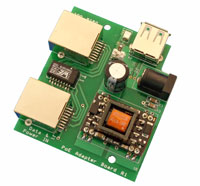 Figure 1: PoE adapter Board (Top View) |
Figures 1 and 2 show the PCB with components fitted. The module provides an IEEE 802.3 compliant PoE input, capable of taking PoE power and data from any PoE injector. The 5V/1.8A output is provided on a USB connector or DC plug. The board provides an IEEE802.3af signature to avoid any potential damage that could be caused by incorrect or shorted Ethernet cables. | 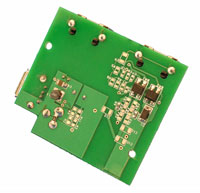 Figure 2: PoE adapter Board (Bottom View) |
Figure 3 below shows a populated adapter board powering a Raspberry Pi over a USB connector. The blue CAT6 Ethernet cable is connected to a PoE switch delivering power and data. The PoE adapter board splits these out; data onto the short CAT5/Ethernet cable and power out on to the standard USB to micro USB cable.
The PoE adapter board provides convenient mounting holes compatible with the Raspberry Pi board.
|
|
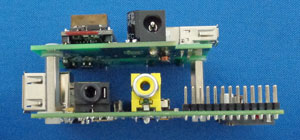 |
|
|
|
|
Figure 3: Shows Raspberry Pi with the PoE adapter board connected |
The latest Release 3 downloads including PHY protection can be found below. Released May 2015.

